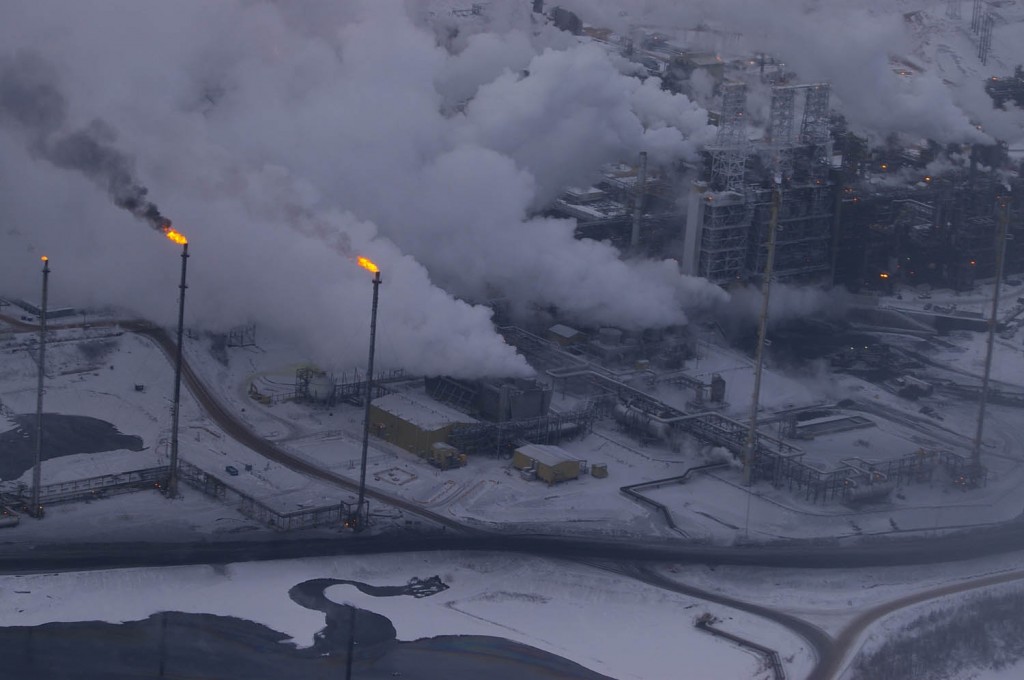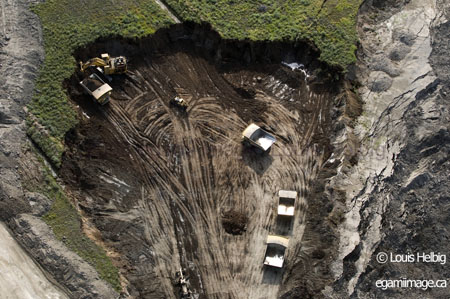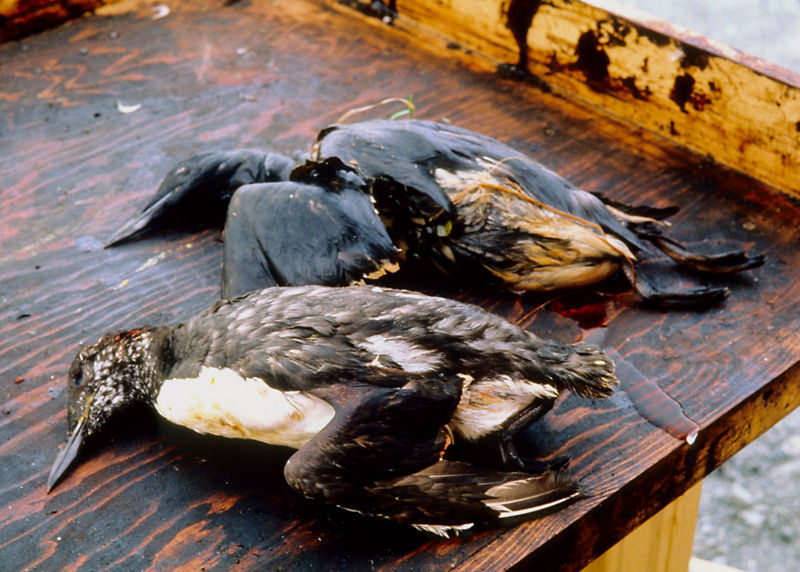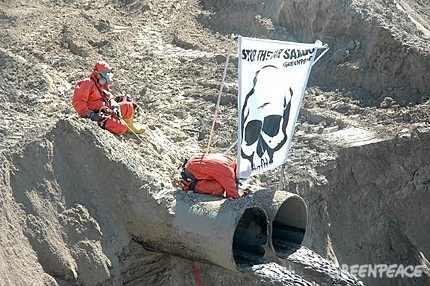 It’s pretty rare that I read a Green Scare smear piece that turns my stomach these days. But this one just took the cake.
It’s pretty rare that I read a Green Scare smear piece that turns my stomach these days. But this one just took the cake.
The Canadian Defence & Foreign Affairs Institute just released a report called “Resource Industries and Security Issues in Northern Alberta,” written by University of Calgary professor Tom Flanagan (the “man behind Stephen Harper,” who has also been an “expert witness” who helped defend several provincial governments in land rights disputes with First Nations communities). The report was sponsored by Nexen, one of Canada’s biggest Tar Sands oil producers.
The article argues that Canada’s Tar Sands industry will continue to face “violent acts or blockades” (which, apparently, are pretty much the same thing) in the years ahead. It examines “individual saboteurs, eco-terrorists, mainstream environmentalists, First Nations and Metis people” as five “threat groups” that threaten the “security” of the industry.
The report was prompted by several recent bombings of Tar Sands pipelines in Alberta and British Columbia; none of these bombs has yet caused any deaths or injuries, and their very small scale and lack of sophistication has the RCMP convinced that they’re the work of “one or two people.” The RCMP (the Canadian equivalent of the FBI) stated that “under the Criminal Code, [the bombings] would be characterized as mischief, which is an intentional vandalism. We don’t want to characterize this as terrorism. They were very isolated locations and there would seem there was no intent to hurt people.”
But that hasn’t stopped Flanagan – funded by Nexen – from going on a Green Scare rampage.
Flanagan’s report starts by describing “eco-terrorists” such as the ELF and ALF (and acknowledging that these groups aren’t likely to start operating in Northern Alberta anytime soon).
It then describes “mainstream environmentalist organizations, such as [RAN allies] the Sierra Club or the Pembina Institute,” which, while condemning “eco-terrorism”,
“sometimes suggest that environmental issues are the ‘root causes’ of terrorists’ and saboteurs’ resort to violence. This stance is typical of moderate groups in many areas of public life, opposing violence but indirectly lending support to extremism by endorsing its goals, if not its methods.”
Flanagan then notes that environmentalists could start engaging in “direct action,” and could possibly even recruit [scary dark-skinned] “protesters from dissident First Nations” to participate in their direct actions. (Flanagan suggests that “probably the best defence against such disruptions is to make sure that local First Nations receive significant economic benefits from any development.” Apparently, it takes a series of bombings for Big Oil to come to the conclusion that they should actually provide benefits to the Indigenous peoples whose lands they’re literally tearing apart.)
Indeed, Canadian First Nations do indeed have a proud history of engaging in nonviolent direct action when their traditional land rights are threatened by corporate or government interests. One of the primary ways that First Nations groups struggle for self-determination is through “warrior societies“: growing out of the Red Power movement of the 1970’s, these groups are integral parts of Indigenous communities, are accountable to traditional leadership bodies, and have a long and proud histories of using blockades, sit-ins, and other forms of direct action to “protect and defend their lands from unprovoked outside aggression” (of which there has been a lot in Canadian history).
But Flanagan describes these “warrior groups” with thinly veiled racism, and then wanders into fantasy-land. Flanagan warns against the possibility – “a nightmare scenario from the standpoint of resource industries in northern Alberta” – in which “eco-terrorists” and “warrior societies” join forces:
“Members of warrior societies would brandish firearms and take public possession of geographical sites, while eco-terrorists would operate clandestinely, firebombing targets over a wide range of territory.”
Now, let’s take a step back here.
First of all, Flanagan’s article doesn’t mention a single instance in Canadian history where members any of these five “threat groups” have killed or injured anyone in defense of the environment. Rather – just like Bush saying that “either you’re with us, or you’re with the terrorists” – Flanagan is trying to equate opposition to the Tar Sands with terrorism.
Now, terrorism used to be defined as “repeated violent action” aimed at political goals. But these days, government officials are taking the word “terrorism” and running with it: in the Animal Terrorism Enterprise Act, for instance, terrorism can be defined as someone who:
“travels in interstate or foreign commerce, or uses or causes to be used the mail or any facility of interstate or foreign commerce, for the purpose of damaging or interfering with the operations of an animal enterprise; and, in connection with such purpose, intentionally damages or causes the loss of any real or personal property [or] conspires or attempts to do so.”
Really? That’s a pretty low bar. And that’s exactly the bar that Flanagan is using.
Now, I can’t speak for anyone else. But RAN is one of the more radical, confrontational environmental groups out there, and we’re committed to nonviolent activism. As our nonviolence statement unequivocably puts it, “Rainforest Action Network does not support or condone violence in any form.”
But our nonviolence statement also states that
“RAN deplores any government-backed efforts that, under the guise of anti-terrorism, attempt to squelch public dissent and curtail civil liberties by criminalizing the constitutional right to peaceful protest.”
And I think that’s the real point here. Flanagan, and the folks over at Nexen who hired him, are exploiting several isolated acts of property destruction – likely carried out by one or two people – in order to cast a cloud of suspicion over environmental activism, whether it’s organized by groups like RAN, or by First Nations communities seeking to defend their traditional lands from the unprecedented environmental destruction that’s being carried out in Northern Alberta, in order to increase the profits of companies like Nexen.
Which brings me to my second point: let’s not forget who the real bad guys are here.
Which would you describe as terrorism?
This?



Or this?


Nexen, you can’t scare the green out of us!